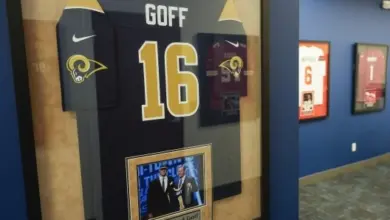Featured Project: Ohio Shop Uses New Vycom Product to Create Rustic Look
Think Patented had used Vycom's Celtec products before, so the company used the shop to test out its new Celtec Woodgrain material.
Miamisburg, Ohio-based Think Patented, a printing, graphics and marketing company, recently used a new product from one of its old partners, Scranton, Pennsylvania-based Vycom, makers of graphic and display materials, to fulfill the sign request of the World Equestrian Center located in Wilmington, Ohio.
Because Think Patented is a frequent customer of Vycom’s Celtec product, Vycom started using the company to test its new Celtec Woodgrain product. Celtec is a product designed for use in a variety of applications, and the Woodgrain product is the company’s first offering in Celtec’s Textured Expanded PVC line. It is available in white, with a one-sided textured woodgrain finish.
“They (Vycom) were looking in particular at whether it would enhance the look of a photo printed on it,” says David McNerney, vice president of sales and marketing for Think Patented.
Vycom provided the shop with various images of scenery and Think Patented printed them on 8″ x 8″ samples of Celtec Woodgrain using UV ink.
According to Vycom, “As the successful printing tests were wrapping up, Jason Schultz, director of strategic accounts at Think Patented, approached McNerney with a new customer challenge: The World Equestrian Center (WEC), Wilmington, Ohio, wanted an indoor sign that looked like aged, rustic wood. Because it would be located adjacent to riding facilities where horses regularly clomped through the area, the sign needed to be durable and easy to clean. Celtec Woodgrain was selected as the perfect solution.
“WEC provided images of wood in the color and style they liked, as well as the look of aged tin that would be printed on another substrate and attached to the Celtec substrate. Think Patented ran a quarter-scale proof of the concept and, as they expected, found the textured substrate brought depth and authenticity to the image of the aged wood.
“‘It created a very realistic aged-wood look the client loved. We were also able to attach the other substrate to the Celtec using a simple liquid adhesive and they bonded together very soundly,” said Schultz.
He notes they also achieved the authentic wood sign look by routing the edges of the 1-inch Celtec on a flatbed cutter to create beveled edges. They painted the edges to match the color of the wood image using a standard wall paint. The entire sign was affixed to the façade of a chapel that resides inside the equestrian center using six, three-inch screws. “The first time the client saw the whole piece completed was when we installed it. They were completely blown away,” Schultz adds. “From where it hangs roughly eight feet up, you can’t even tell it’s not real wood.”







